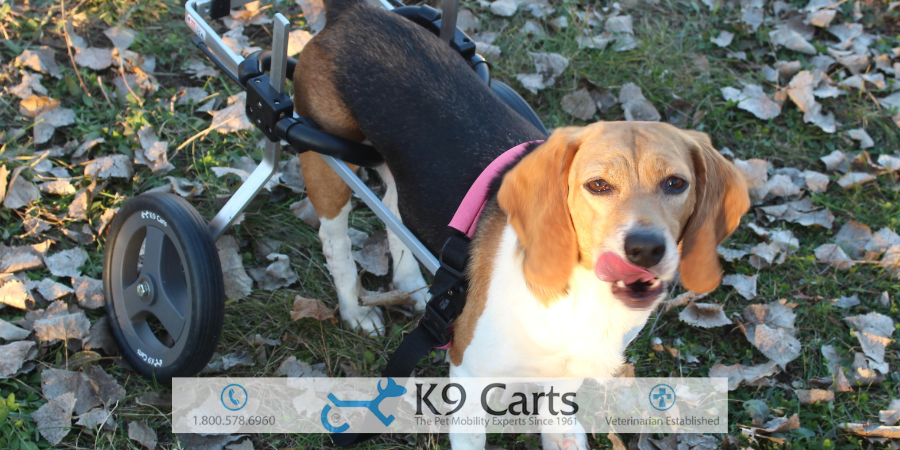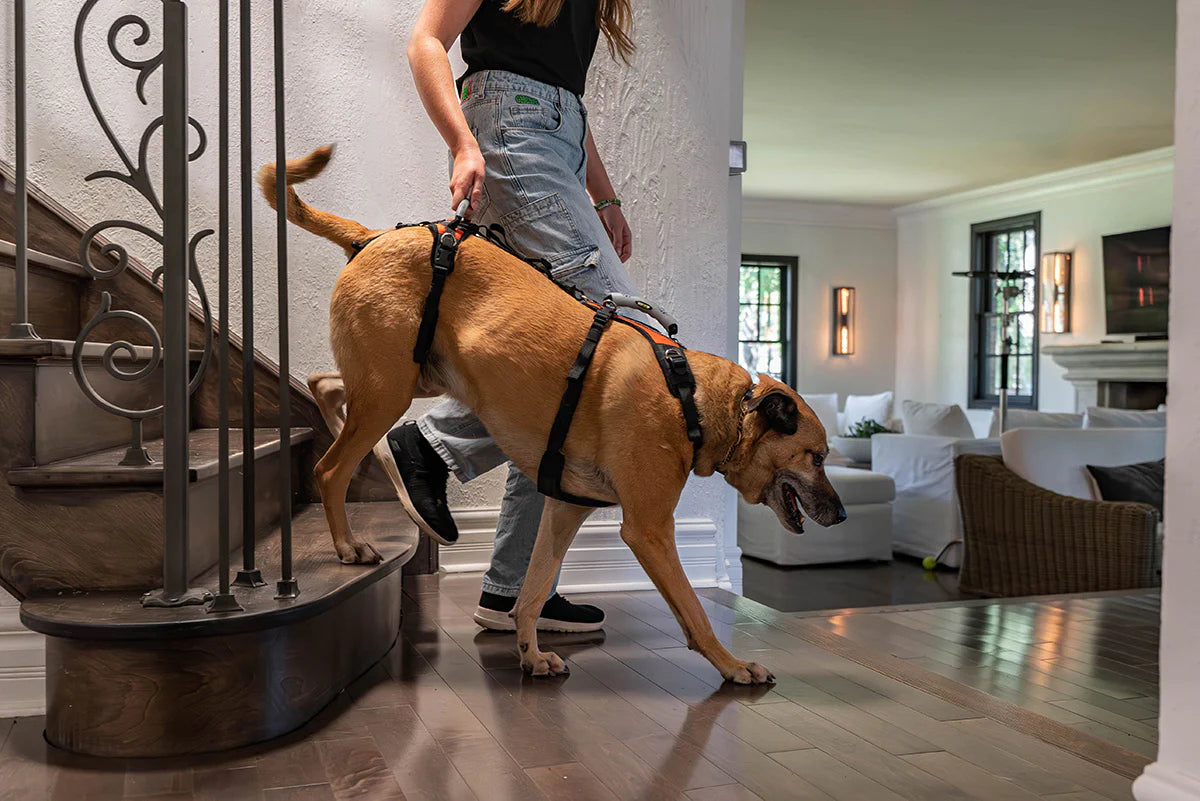8 Signs Your Dog May Have Nerve Damage in Its Back Legs

When your dog starts to show signs of difficulty in moving or loses control over its back legs, it can be both alarming and confusing.
Nerve damage is one potential cause behind such symptoms, and understanding its signs, causes, and treatments is crucial for giving your pet the best quality of life. This page explores the signs of nerve damage in your dog's back legs, outlines potential treatment options, and provides strategies for managing the condition effectively.
Recognizing the Signs of Nerve Damage in Your Dog's Back Legs
Nerve damage in dogs often manifests in noticeable ways. Early detection can significantly improve treatment outcomes and help prevent further complications.
Common Symptoms to Watch For
Dogs with nerve damage in their back legs may show signs such as:
- Weakness or loss of strength in the hind limbs.
- Dragging of one or both back legs while walking.
- Difficulty standing, sitting, or jumping.
- Limping on the hind legs.
- Muscle wasting (atrophy) in the hindquarters.
- Loss of coordination or balance.
- Sudden paralysis in the back legs.
- Loss of bladder or bowel control.
These symptoms may develop gradually or suddenly, depending on the underlying cause. Paying attention to even subtle changes in your dog's movement or behavior can make a big difference.
Differentiating Nerve Damage From Other Conditions
Nerve damage can mimic other issues, such as arthritis, hip dysplasia, or spinal cord injuries. A veterinarian's evaluation is essential to pinpoint the cause. Diagnostic tests such as X-rays, MRIs, or nerve conduction studies may be necessary to confirm nerve involvement and rule out other possibilities.
What Causes Nerve Damage in Dogs?
The causes of nerve damage in dogs' back legs are varied, and identifying the root cause is a critical first step in determining treatment.
1. Trauma or Injury
Physical injuries, such as being hit by a car, falling from a height, or blunt force trauma, can damage the spinal cord or peripheral nerves. Even minor injuries can have significant consequences if they disrupt nerve signals.
2. Degenerative Diseases
Conditions such as Degenerative Myelopathy (DM) progressively affect the spinal cord, leading to nerve dysfunction. DM is more common in certain breeds, such as German Shepherds and Boxers, and usually develops in older dogs.
3. Intervertebral Disc Disease (IVDD)
In IVDD, the discs between the vertebrae herniate or rupture, compressing the spinal cord and nerves. This condition is common in breeds like Dachshunds and Beagles.
4. Tumors or Growths
Masses in the spinal column or surrounding nerves can compress neural tissue, leading to weakness in the back legs or paralysis. These may require imaging for proper diagnosis.
5. Infections and Inflammation
Diseases such as meningitis or tick-borne illnesses like Lyme disease can cause inflammation that affects nerve function. Infections must be addressed promptly to prevent permanent damage.
Treatment Options for Canine Nerve Damage
Treating nerve damage depends on its cause, severity, and the dog's overall health. While some conditions can be reversed, others require long-term management.
Medical Treatment
Medications, such as anti-inflammatory drugs, corticosteroids, and pain relievers, can reduce inflammation and alleviate discomfort. Antibiotics may be prescribed if an infection is present.
Physical Therapy and Rehabilitation
Physical therapy can help dogs regain strength and mobility. Techniques include hydrotherapy, massage, and controlled exercises. These methods stimulate nerve function, improve circulation, and prevent muscle atrophy.
Surgical Intervention
Surgery may be necessary for conditions like IVDD, tumors, or severe trauma. Procedures aim to decompress nerves, remove growths, or stabilize the spine. A veterinary neurologist typically performs these surgeries.
Complementary Therapies
Acupuncture and laser therapy are gaining popularity as non-invasive ways to promote nerve regeneration and manage pain. While not a standalone solution, these therapies can complement traditional treatments.
Managing Hind Leg Nerve Damage in Daily Life
If nerve damage cannot be fully treated, managing your dog's condition becomes the focus. With proper care, dogs with mobility challenges can still lead happy lives.
Use a Hind Leg Wheelchair
Custom-built wheelchairs for hind legs are a transformative solution for dogs with paralysis or weakness in their back legs. These wheelchairs provide support, enabling your dog to move independently and maintain an active lifestyle.
Maintaining Skin and Paw Health
Dogs with limited mobility may drag their hind legs, causing abrasions or sores. Protective booties or harnesses can prevent injuries. Regular checks of the skin and paws are essential for early detection of wounds.
Preventing Secondary Complications
Incontinent dogs may need special bedding and frequent cleaning to avoid urinary tract infections or skin issues. Ensuring a hygienic environment minimizes the risk of further health problems.
Keeping Your Dog Active
While high-impact activities may not be suitable, gentle exercises like swimming or controlled leash walks can maintain muscle tone and mental well-being. Consult with your vet or a rehabilitation specialist to create an exercise plan tailored to your dog’s abilities.
When to Consider a Custom Wheelchair for Your Dog
Mobility loss can be overwhelming for both dogs and their owners, but a custom-built wheelchair can restore independence.
Unlike generic options, custom wheelchairs from K9 Carts are designed to fit your dog’s specific measurements and needs, ensuring maximum comfort and functionality. These devices are particularly helpful for dogs with conditions such as IVDD, degenerative myelopathy, or traumatic injuries.
Wheelchairs not only improve mobility but also boost your dog’s emotional well-being by allowing them to explore, play, and interact as they did before their condition.
Helping Your Dog Thrive Despite Nerve Damage
While nerve damage in the back legs can be challenging, advances in veterinary care and mobility aids make it manageable. Early detection and appropriate treatment are key.
Whether through physical therapy, surgery, or mobility solutions like a custom-built wheelchair, there are ways to ensure your dog remains happy, healthy, and active. With the right care, dogs with nerve damage can continue to enjoy a fulfilling life.








